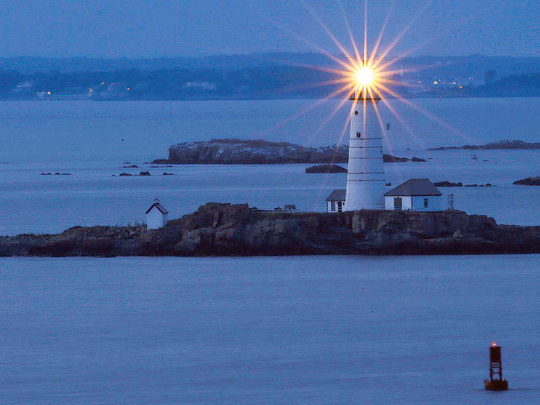
What Dolin makes vividly clear is that building and operating lighthouses was a constant battle of one sort or another. Nevertheless, the lighthouse was considered to be a success, and soon lighthouses were being built all along the East coast. Fires caused by whale oil lamps tipping over or lightning strikes gutted the lighthouse repeatedly. Several lighthouse keepers and members of their families drowned in the first years of operation as they attempted to get to or from Little Brewster Island in bad weather. Tending the first lighthouse proved to be a perilous job. Dolin describes building the first American lighthouse on Little Brewster Island in Boston harbor in 1716, a 60 foot high conical tower made of rough cut granite, lit by crude lamps burning fish or whale oil. Prior to 1716, the coast was largely dark in the British North American colonies.

Eric Jay Dolin’s Brilliant Beacons: A History of the American Lighthouse tells the story of how these iconic structures came to be and how they helped shape the commerce and the future of our young nation. Lighthouses exist only because of those who built them, operated them and maintained them. In reality, they are nothing of the sort.

They often seem to just integral part of the shoreline or stony sentinels growing naturally up out of rocky reefs. And yet, most of the time, we take lighthouses for granted. Even with modern electronic navigation, there is something incredibly reassuring about seeing the lume of a lighthouse beacon shining through the darkness or hearing the moan of a fog horn reverberating through a blinding white fog. By Rick Spilman – Next only perhaps to an anchor, lighthouses are symbols of security and safety.


 0 kommentar(er)
0 kommentar(er)
